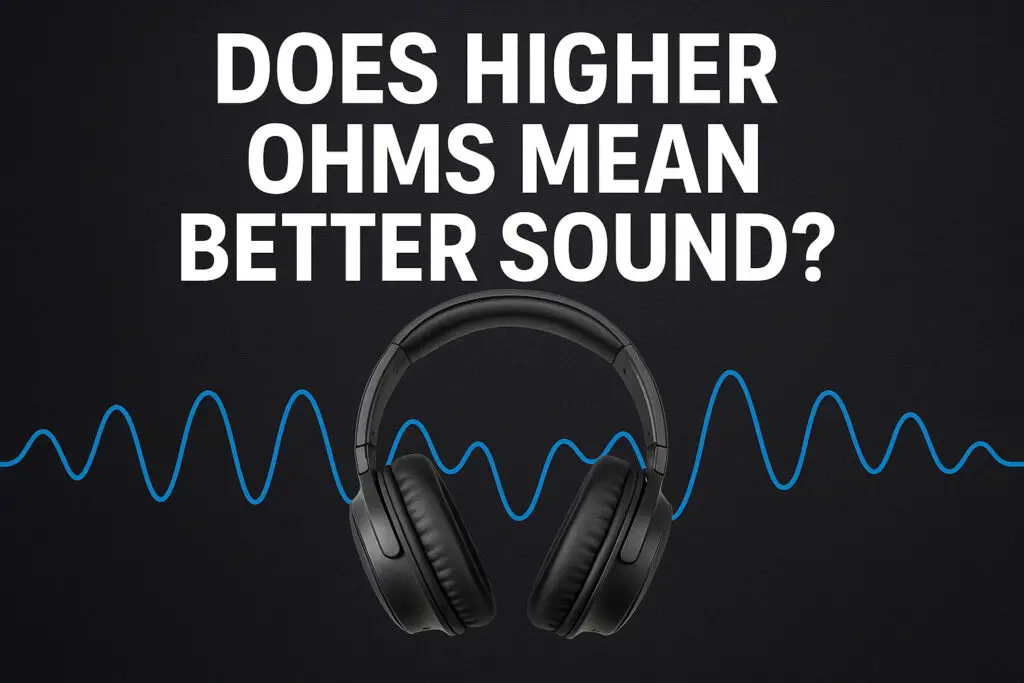If you’ve ever shopped for headphones, speakers, or amplifiers, you’ve probably noticed the term “ohms (Ω)” printed on the specs. Many people assume that higher ohms automatically mean better sound quality — but is that really true?
Let’s break down what ohms mean and how they actually affect your listening experience.
What Are Ohms in Audio?
An ohm (Ω) measures electrical resistance — in simple terms, how much a device resists the flow of electrical current.
In audio equipment:
- Speakers and headphones have an impedance rating (in ohms).
- Amplifiers send electrical signals (power) to drive them.
The impedance determines how much power is needed to produce sound:
- Low impedance (e.g., 16–32Ω): Easier to drive, works well with phones or portable devices.
- High impedance (e.g., 80–600Ω): Requires more power to reach the same volume but can offer more refined sound when properly amplified.
Does Higher Ohm Mean Better Sound Quality?
Not necessarily.
While higher ohms can allow for better control and detail, that doesn’t automatically mean “better sound.” The real answer depends on the equipment you’re using and how well it’s matched.
Here’s why:
1. High Ohm Headphones Need Proper Amplification
A 300-ohm pair of studio headphones may sound flat and quiet if plugged into a smartphone.
But when connected to a powerful amplifier, those same headphones can produce clearer highs, tighter bass, and better dynamics.
So, higher ohms can mean better potential, but only with the right amp.
2. Low Ohm Devices Are More Versatile
Headphones or speakers with lower impedance (around 32 ohms) are designed to work with everyday devices — laptops, phones, or tablets.
They can still deliver excellent sound, even if they aren’t quite as detailed as high-impedance models.
If convenience and portability matter most, lower ohm headphones are the smarter choice.
3. Sound Quality Depends on More Than Ohms
Ohms are just one piece of the puzzle. Sound quality also depends on:
- Driver design and size
- Frequency response
- Build materials
- Amplifier quality
- Digital-to-analog converter (DAC)
A well-engineered 32-ohm headphone can easily outperform a poorly made 250-ohm one.
Comparing Low vs. High Ohm Headphones
| Feature | Low Ohm (16–32Ω) | High Ohm (80–600Ω) |
|---|---|---|
| Power Needs | Works with phones & laptops | Needs dedicated amplifier |
| Portability | High | Low |
| Sound Potential | Good | Excellent (if properly powered) |
| Durability | Moderate | Often more robust |
| Best For | Casual listening | Studio & professional use |
So, Do Higher Ohms Mean Better Sound?
Not by themselves.
Higher ohm headphones or speakers can deliver better sound quality — but only when paired with a strong amplifier that can drive them properly.
If you’re a casual listener, you’ll get great results from low-impedance gear.
If you’re an audiophile or sound engineer with high-end equipment, high-impedance models can unlock that next level of audio detail.
The Bottom Line
- Higher ohms ≠ automatic better sound
- Proper pairing = better performance
- Choose based on your gear and listening style
In the end, it’s all about balance — the right combination of impedance, power, and sound design makes the music truly come alive.

